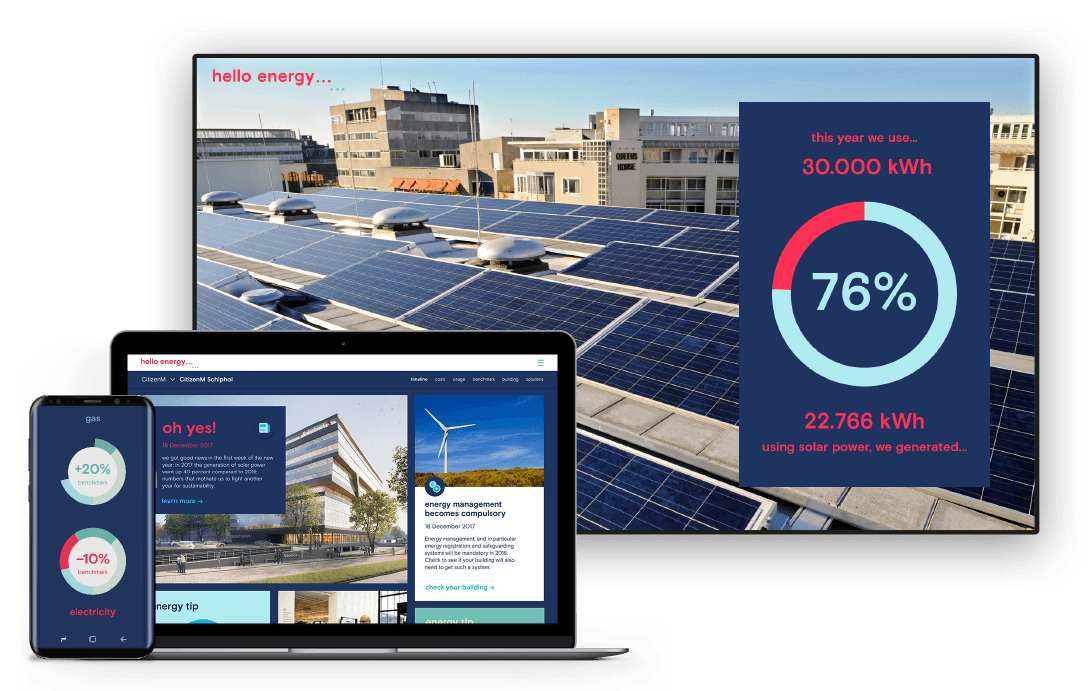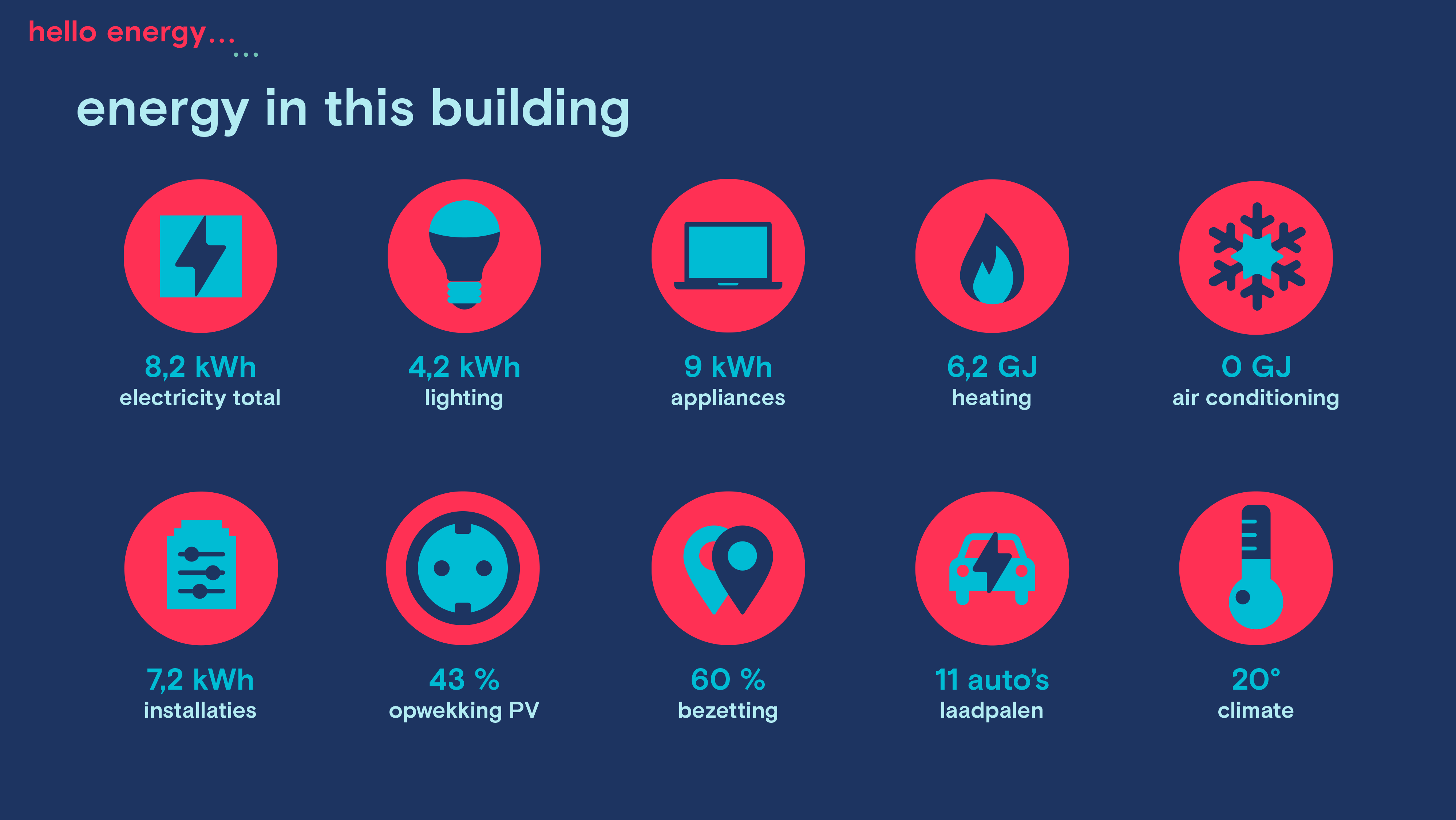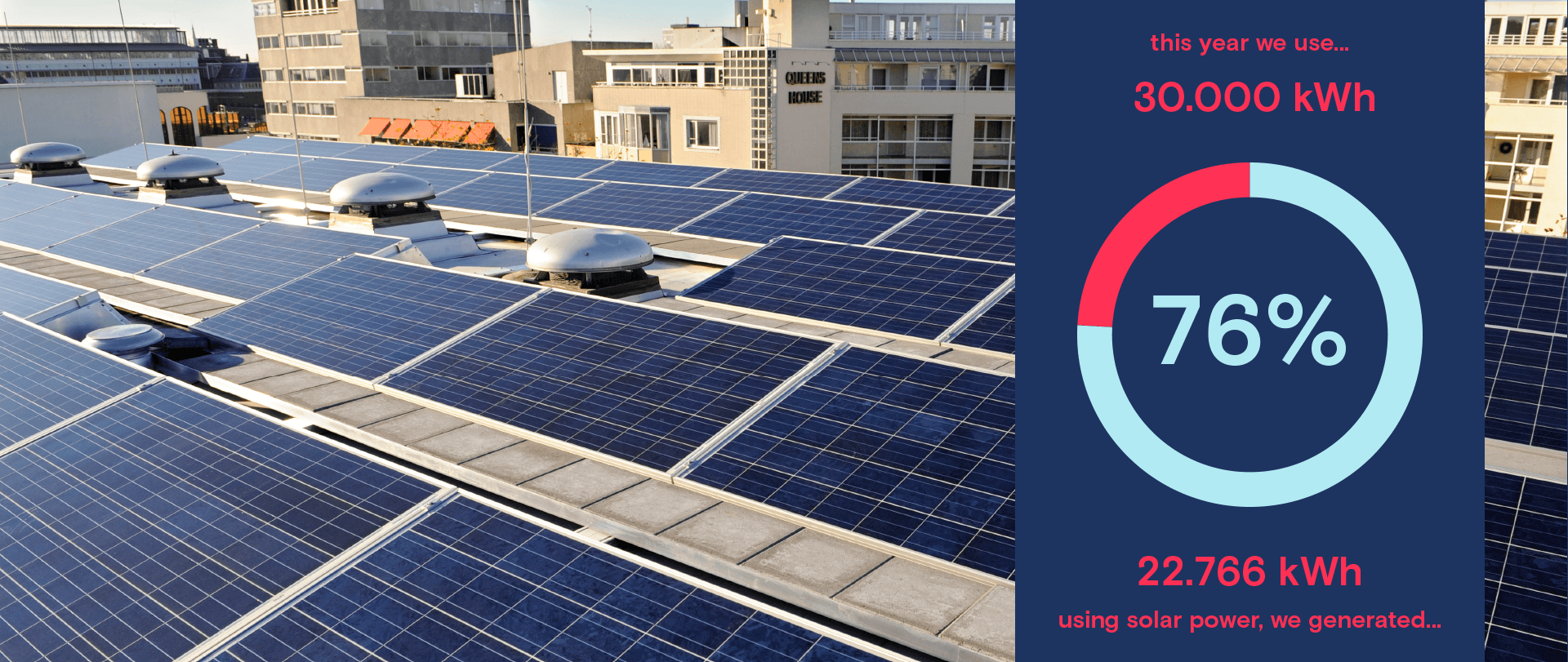Editor’s note: This is a sponsored article, which means it is independently written by our editorial team but financially supported by another organisation, in this case, Techleap.nl. If you would like to learn more about sponsored posts on tech.eu, read this and contact us if you are interested in partnering with us.
Investing in sustainability for your building is a great step towards smart energy consumption. However, is it possible to let others know about your contribution and encourage them to follow your lead to achieve energy empowerment? That's the question that has led to the creation of Hello Energy.
Hello Energy is a platform that monitors and visualises energy consumption developed by Kees van Alphen and Benno Schwarz in 2016. The startup assists its clients in communicating their energy policy and consequently promoting sustainability worldwide.
Put simply, Hello Energy packages various data related to the building’s energy consumption and generation in easy-to-understand infographics that can be shown across all sorts of screens, from hallway TVs to phones and laptops.
Van Alphen and his team were able to determine the focus of their efforts after communicating with potential customers. That is when they found a gap that needed bridging — and soon.
“They say that there seems to be a lot of knowledge about energy and sustainability,” Van Alphen said. “But they also question how it is possible to transfer these insights and the knowledge to their clients, employees, or other stakeholders.”
Three-pillar functioning model
The strategy of Hello Energy is structured around three pillars: collect, connect, and engage. The system obtains all kinds of data from a building and aggregates them, getting valuable insights along the way. This information is communicated visually to all the important stakeholders and, possibly, everyone who enters the building.
“Those who decide on a new policy are mostly not that technical,” Van Alphen said. “So we are looking for ways to explain the information in a very simple and insightful language.”
To get a full overview of the data, Hello Energy gathers information from all the tenants occupying the building. Delivery of content happens digitally across multiple platforms: laptop screens, video walls, touch screens, or information emails.
Setting a connection between a building and the visualisation tool is an important challenge for Hello Energy. A perfect scenario is when a client has all the data gathered in a building management system, which could easily communicate with Hello Energy API. But what if they don’t?
“We have a big number of local partners in several countries who come on-site, change meters, put data loggers in place, etc. Then we use an existing API to get the data from these meters into our system,” Van Alphen said. “But it's really a big job because no country is the same. The smart metering program in the EU is different in every country.”

Collection and connection are only an initial stage as the data alone brings no changes. Engagement is the next point of the Hello Energy program. And this is where the company faces another kind of difficulty: in the real estate industry, it is not so simple to connect a building owner and a tenant because of a strong split incentive.
“The knowledge is there, the processes are there, but nothing’s happening. Someone invests and the other is having the revenues. Or the one that invests wants the revenue immediately, although it's better to have longer periods,” Van Alphen said. “So we are looking for ways to get these kinds of insights into the ecosystem of the real estate companies.”
Seeing the immaturity of the whole system, Van Alphen and his team are completely aware of a long path towards a zero-carbon future. In this sense, looking for solutions for their clients helps them to grow as well.
“We often work together with our clients to develop solutions that fit their situation,” Van Alphen said.
Next goals: scalability and internationalisation
Hello Energy currently works in almost 600 buildings in 11 countries, and is still expanding. The company has already secured a couple of upcoming projects with foreign partners, mostly in Europe; the further plans include firms whose assets are located in the US.
“We have five buildings in the US, but we expect to have a real portfolio there during the next year,” Van Alphen said.
Software from Hello Energy could be easily scaled up in terms of both number of buildings and range of devices where the data can be seen.
“Of course, our software can show data on a laptop screen anywhere in the world,” Van Alphen said. “But we are still working to get our content to every kind of channel available. Content delivery is one of our focus points.”
Standardisation of tools is another aspect that Van Alphen and his team are working on. Hello Energy is working with a wide range of partners that supply data gathering devices, from smart water meter add-ons to indoor climate sensors. At the same time, the startup has made sure its platform is compatible with all major building management systems, allowing it to receive relevant data quickly and easily. At the same time, there is always room for improvement.
“We also see that we need a lot of new technology to get standardised data. It's in our roadmap,” Van Alphen said. “Our focus is on standardisation and scalability. We know we need to connect to a lot of services to have everything in place but we try to build a scalable model for them as well.”

Partners, not rivals
Hello Energy follows the latest developments in the industry, where new companies working on similar projects launch regularly. Van Alphen, however, doesn’t consider them a threat to his business.
“When we look at the parts of our product, we see that on what we call the energy monitoring system part, there are a lot of competitors worldwide,” Van Alphen said. “In some areas like data analytics they have a better position than us. But the engagement part of our system is really number one in the world yet.”
Hello Energy is also looking for ways to cooperate with industry peers rather than engage in rivalry.
“We have many competitors — but we think of them as partners in our ecosystem,” Van Alphen said. “So we connect with all our competitors if possible.”
A vivid example of such friendly collaboration is Hello Energy’s work with Prologis, one of the biggest real estate logistics companies in the world. Prologis connects its buildings to Hello Energy’s platform, but has also other partners in the UK and the US. Van Alphen is happy to connect to other company’s tooling and provide the visualisation service based on its hardware.
“We see that we are able to attract new clients, and we see that they are very happy with our product and energy cooperation,” Van Alphen said. “I think that the concept we are developing is number one in the world. Maybe there'll be other competitors but we’re not afraid. We only know that we need to speed up.”
New stage towards development
Hello Energy has already raised a $1 million and wants to at least double this amount over the next six months. This year it was also given an opportunity to participate in the Techleap.nl Rise Program, which helps the Netherlands-based scale-ups to grow rapidly, speed up market adoption, and get insights from some of the country’s most successful entrepreneurs.
Van Alphen is very proud of his company to be noticed and chosen among many other successful scale-ups.
“We put a lot of effort in our branding as a company with a lot of potential,” Van Alphen said. “It’s nice that the outside world sees it this way as well.”
Hello Energy regards the Techleap.nl Rise as just what it needs to achieve its main goals: improve sales, expand the team, and scale up.
“All the subjects that are on the table in the Rise Program, they are very, very good for us,” Van Alphen said.
As Van Alphen states, the company has already received some useful tips on how to approach hiring new people. Moreover, now the team has a chance to be part of regular networking events — something which is hard to achieve in the current pandemic situation.
“I joined all the meetings. First, we learn a lot, and, of course, we get a lot of networking,” Van Alphen said.
Current challenges and future dreams
Now the focus of Hello Energy lies in the domain of collecting data not only from separate buildings but managing a complete portfolio of real estate companies. And, of course, to expand and to show their value on the European market.
“Our challenge is to have nice pilots of 10 to 50 buildings in a few countries,” Van Alphen said. “So we can show really what our benefits are and within three, four months to prove them and then go onto the whole portfolio.”
After this primary task has been accomplished, Hello Energy is going to concentrate its efforts on boosting an engagement process between different stakeholders.
“We see a lot of opportunities, but we also have to work to develop a lot of new features and ways to interact with all the different stakeholders,” Van Alphen said. “I think that in the engagement part, although we have surely a lot of good steps already, we have maybe 5 percent of what we want to have there.”
And what are the endpoint and ultimate dreams of Hello Energy? Of course, energy-positive sustainable buildings.
“Buildings that create more energy than they use, and that also provide an energetic surrounding for everyone who's working at and visiting the building,” Van Alphen said.“That is our main purpose.”



Would you like to write the first comment?
Login to post comments